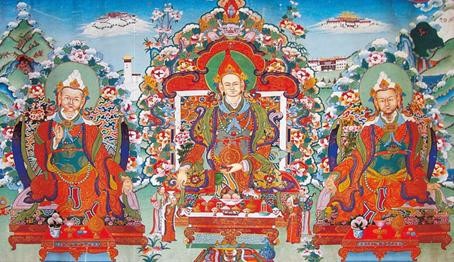Introduction to Buddhism

Buddhism, also known as Buddha Dharma,
Originated around the 6th century BCE. Siddhartha Gautama, a prince from the ancient Indian kingdom of Kapilavastu (located near the present-day Nepal-India border), attained enlightenment at the age of 35, realising the universal truth of life ("Buddha" means "the enlightened one"). The Buddha taught that "suffering" (dukkha, literally meaning "pain or unease") coexists with attachment or clinging, but there is a path leading to awakening and complete liberation from suffering. Buddhist teachings broadly include the Four Noble Truths (suffering, origin, cessation, and path), the Noble Eightfold Path (right view, right intention, right speech, right action, right livelihood, right effort, right mindfulness, and right concentration), as well as the doctrines of dependent origination, karma, and the three marks of existence. Other common doctrinal elements include the Three Jewels, monastic vows, and the cultivation of perfections (paramitas).
Buddhist scriptures are vast, encompassing collections in various languages (such as Sanskrit, Pali, Tibetan, and Chinese). Different Buddhist schools vary in their interpretation of the path to liberation and the relative importance and "canonicity" of different Buddhist texts, with distinct doctrines and practices. Scholars generally recognise two major existing branches of Buddhism: Theravada (literally "School of the Elders") and Mahayana (literally "Great Vehicle"). Theravada Buddhism emphasises the attainment of nirvana (literally "extinction") as a means to transcend individual self and end the cycle of rebirth (samsara), while Mahayana Buddhism emphasises the bodhisattva ideal, believing that practitioners should strive for the liberation of all sentient beings. Additionally, Vajrayana (literally "Indestructible Vehicle") is a system of teachings incorporating tantric practices, which may be viewed as an independent branch or tradition within Mahayana Buddhism.
Buddhism has evolved to become one of the world's three major religions in modern times. It has profoundly influenced world cultures, particularly in East Asia and the Indochina Peninsula, and has also had extensive influence in Central Asia, South Asia, and the Maritime Southeast Asian region. It is now expanding into Europe, Africa, and North America. Through historical development and two main transmission routes (Southern and Northern), modern Buddhism exists as Southern Buddhism, primarily transmitting Theravada teachings (focussing on the śrāvaka vehicle but also including some bodhisattva teachings, see Southern bodhisattva path), and Northern Buddhism, primarily transmitting Mahayana teachings, which can be further divided into Chinese Buddhism (Mahayana or exoteric Buddhism) and Tibetan Buddhism (or esoteric Buddhism). Thus, there is also a threefold classification: Southern Buddhism (Theravada), Chinese Buddhism (Mahayana), and Tibetan Buddhism (distinguished from Mahayana as esoteric Mahayana Buddhism). Within these major schools (whether following the twofold or threefold classification), there are numerous sects. The Southern Buddhist system mainly aims at becoming an arhat, whilst the Northern Buddhist system aims at becoming a buddha. All Buddhist schools acknowledge that practitioners who attain buddhahood, arhatship, or pratyekabuddhahood can be liberated from the cycle of birth and death, all reaching the state of nirvana.
Siddhartha Gautama, born in the ancient Indian cultural region, is Buddhism's most influential proponent, known as Gautama Buddha in Southern Buddhism and reverently called Shakyamuni Buddha in Chinese Buddhism. "Shakyamuni" itself refers to Siddhartha Gautama's background, meaning "Sage of the Shakya Clan." The term "Buddha" means the awakened or enlightened one, and in Chinese, it broadly includes the buddhas of the three times. The essential meaning of Buddhism is Buddha's teaching rather than a religion of deity worship, resembling more a philosophy than other religious doctrines, as original Buddhism did not worship deities and even opposed superstition. Buddhism emphasises the need to deeply understand suffering (duḥkha), its origin (12 dependent originations), and the path to end suffering (Eightfold Path), as well as understanding impermanence (anicca), non-self (anattā), and the peace of nirvana.
Buddhism has made indelible contributions to world cultural transmission throughout history. It emphasises human spiritual and moral progress and enlightenment. Achievement in Buddhism means benefiting all beings, rather than the common understanding of self-achievement, such as gaining fame, wielding power, or accumulating wealth.
According to Buddhist viewpoint, humans, like beings in the other five realms, are immersed in suffering and continuously cycle through birth and death. Only those who eliminate ignorance can transcend the three realms and end rebirth. Buddhist practitioners aim to follow and practise the Four Noble Truths realised by Siddhartha, see through the truth of life and the universe, eliminate all afflictions, ultimately transcend birth, ageing, sickness, death, and all suffering, end the cycle of six realms, attain ultimate liberation, and enter the state of nirvana.


